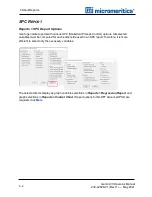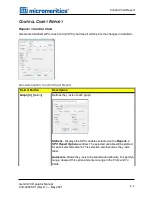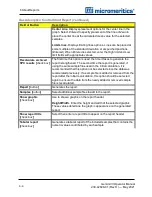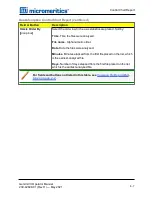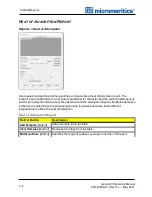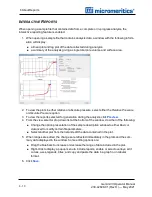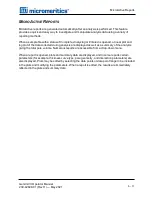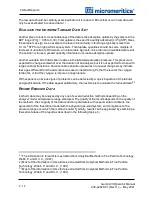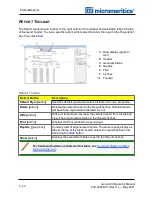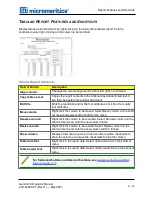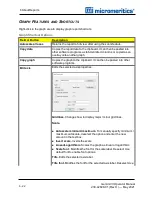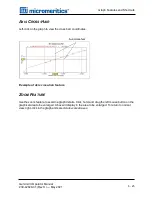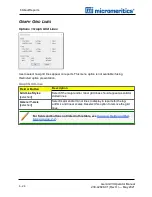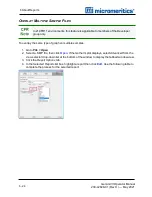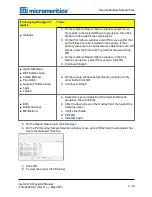
6 About Reports
The raw data should be carefully examined before it is reduced. Errors that occur in raw data will
only be exacerbated in reduced data.
1 )
E
VALUATE THE
I
SOTHERM
T
ABULAR
D
ATA
S
ET
Another place to look for reasonableness of the data is the adsorptive uptake by the sample in the
BET range (P/P
0
= 0.05 to 0.30). Total uptake is the specific quantity adsorbed (cm
3
/g STP) times
the sample mass (g). As an example, the level of uncertainty in this range typically is less than
0.1 cm
3
STP for a high performance system. Total uptake quantities should be some multiple of
this level of uncertainty. Otherwise, an unfavorable signal-to-noise ratio and unreliable data result.
The solution is to use a greater quantity of sample to increase adsorptive uptake.
Another valuable bit of information resides in the tabulated saturation pressure. This pressure is
expected to change somewhat over the duration of an analysis, but it is not expected to do so with
large or abrupt transitions. Unreasonable saturation pressures or unusual changes may indicate
that a gas different from the adsorptive was used in determining P
0
, that the level of the cryogen
fell too far, or that the cryogen is impure or inappropriate.
With experience, obvious signs of problems can be detected by a quick inspection of the tabular
and graphical data. If the data appear satisfactory, the next step is to evaluate the reduced data.
2 )
R
EVIEW
R
EDUCED
D
ATA
Isotherm data may be analyzed by any one of several reduction methods depending on the
analyzer model and pressure range employed. The quality of the results depends on the quality of
the isotherm, the congruity of the data reduction parameters with experimental conditions, the
agreement of the theoretical model with the physical gas-solid system, and compliance to the
pressure range over which the method is valid. Typically, results can be appraised by examining a
few salient areas of the report as described in the following topics.
3 )
1 )
The information in this article is extracted from Analytical Methods in Fine Particle Technology,
Webb, P. and Orr, C., (1997).
2 )
Most of the information in this article is extracted from Analytical Methods in Fine Particle
Technology, Webb, P. and Orr, C., (1997).
3 )
Most of the information in this article is extracted from Analytical Methods in Fine Particle
Technology, Webb, P. and Orr, C., (1997).
6 - 14
Gemini VII Operator Manual
239-42828-01 (Rev H ) — May 2021
Summary of Contents for GEMINI VII
Page 1: ...OPERATOR MANUAL 239 42828 01 May 2021 Rev H GEMINI VII SURFACE AREA ANALYZER ...
Page 10: ......
Page 16: ......
Page 92: ......
Page 126: ...6 About Reports SAMPLE LOG REPORT 6 34 Gemini VII Operator Manual 239 42828 01 Rev H May 2021 ...
Page 127: ...T PLOT REPORT t Plot Report Gemini VII Operator Manual 239 42828 01 Rev H May 2021 6 35 ...
Page 128: ...6 About Reports VALIDATION REPORT 6 36 Gemini VII Operator Manual 239 42828 01 Rev H May 2021 ...
Page 234: ......
Page 242: ......
Page 244: ......
Page 247: ......
Page 248: ......



